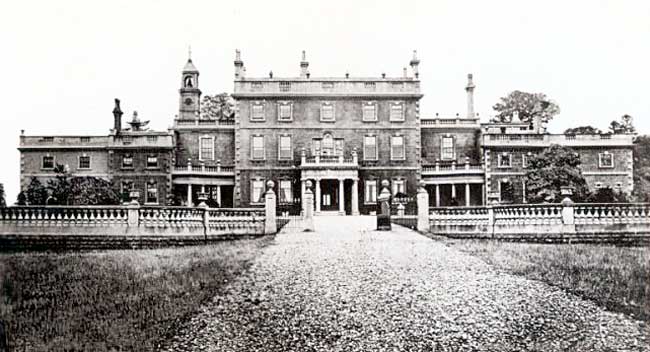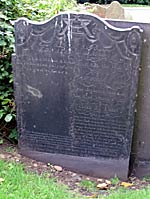Golf. The Notts. Golf Club in 1887 formed links on Bulwell Forest, with seven holes only, extended in 1894 to a full eighteen hole course. The Great Northern Forest Station Master, Mr. and Mrs. Williamson and family, allowed their house to be used for changing clothes. In 1900 the club decided to lease 217 acres at Hollinwell from the Ecclesiastical Commissioners. The club had then 250 members, and the subscription was two guineas. Dr. H. J. Neilson was the captain for the year. Tom Williamson, the son of the station master, when 16 years of age was appointed professional to the club, which office he still holds to the full satisfaction of the club, in which he became a skilled player, and an expert in laying out new courses. He has also helped to train a number of Bulwell men who are now in charge of links in various places, or professionals, such as the Reids, Hallams, the younger Williamsons, Leadar, Teddar, Bonner, Button, Bembridge, Thorne, Smith. White, etc., and he and Reid have several years represented England against Scotland.
As far as can be ascertained the land we call the Forest is virgin soil—that is,it has never been cultivated by ploughing, and it is a picture to us of how a large part of the country looked before the parish Inclosures of the 18th century, growing a little grass, and much gorse, and ling or heather. There does not appear to have been an Inclosure Act for Bulwell, as the lord of the manor, and the toftstead holders, and the local court, kept matters in their own hands, and although the Forest is not now cultivated, it never was so much used as it now is, for there are three golf clubs playing, namely, (1) Bulwell Forest Golf Club, 1902, with 450 members. (2) Bulwell Artizans Golf Club, with 100 members; this club has turned out in the teens of professionals, among whom are Tom Williamson, of Hollinwell, and Wilfred Reid of Banstead Down; the club will come of age in 1914. (8) The St. Albans Ladies' Golf Club, with about 100 members; the fees are, gentlemen 31/6 per annum, ladies 21/-, artizans 7/6. The professional is Bonner. Both the Notts. Golf Club, and the City Golf Club originated here. There is a well-appointed pavilion, and dressing rooms, with 504 lockers a dining and smoke room, and comfortable quarters for the stewards, and refreshments are supplied at very reasonable prices. The pavilion cost £3,447. There is also a portion of the forest set aside for footballers, on which two matches are played on Saturdays. There is a cricket pitch on another portion, on which about five teams have regular pitches. The children are not forgotten, for they have swings.

The magnificent Bulwell Hall was built in 1770 and demolished in 1958.
The Hall. Alderman Albert Ball in 1908 purchased the Bulwell Hall Estate, including the hall and 575 acres of land, the mineral rights, etc., and being a member of the Corporation he offered to assign the contract at cost price, without profit, namely £85,000, which was accepted by the City Council. The hall and 250 acres of the land have since been used by the people as a place of refreshment and recreation. The remainder of the land included in the estate is let to various tenants.
The hall was built about 1770 by John Newton, Esq. and was derisively called Pye-Wipe Hall. It has on the ground floor eight rooms, in addition to three kitchens, and on the first floor fifteen rooms, with some attics over; is now let to a caterer who supplies all kinds of refreshments, except intoxicants, and, except in the busy season, lets apartments. The stables have been converted into tea rooms, where as many as 500 children can be accommodated at once; an ideal spot for school parties, having a large room over for use in case of rain. There is a bowling green on the lawn, and a good tennis court near, used by a club. The park is used by the public, and the woods are attractive when the blue bells bloom, and the more so where a party is accompanied by a lover of nature. The gardens form a nursery for the plants required for the City Parks, and in 1912, it is stated, £430 worth of plants were taken out for that purpose. The lake is used by a fishing club, with a 2/6 subscription, and 6d. for a single day's sport.
The Great Central Railway has a "Halt," with a return fare after noon of 4d. from and to Victoria. Nottingham City Golf Club has a pavilion adjoining the Halt, and has 263 members, the subscription being 42/- a year, and for joint tickets for playing on the Hall links and the Forest links, 52/6 per year. There is a ladies' golf club, with 80 to 90 members, paying 21/-, the professional being W. Teddar. There is a cricket ground and club, and there are four football teams use the grounds south of the lake. A new foot road has been made from the grounds to Quarry Road. An additional use will doubtless be found for the little used parts of the hall for purposes of education, or health, or otherwise.
Cemetery. A Cemetery, having an area of 18 acres, on land belonging to the Corporation at North Hempshill farm, was laid out by the Public Parks and Burial Grounds Committee, when Mr. W. H. Carey was chairman, in 1903 The cost, including the fencing, laying out of the grounds, erection of chapels and lodges, and improvements to Hempshill Lane, as an approach, was £10,130.
Allotment gardens were also laid out, and let at £2 per acre. There are some small holdings, a total of 90 acres having been purchased.

Slate headstone in thge churchyard at Bulwell to Jeremiah Reed (died 28 July 1838) and his wife, Sarah (died 2 March 1792).
The Churchyard. Some of the inscriptions were copied by Mr. A. Stapleton, and printed in The Nottingham "Red Book," 1891. Of the Rectors' gravestones, one has, in Latin, an inscription "Here lies the Reverend Thomas Greening, late rector of this Church." Its date is 1666, the year after the great plague. Another is more definite, "Waiting for the resvrrection of the jvst here lyes the body of Mr. Adam Tvrner who was a diligent Rector of this parish near 27 years he was a Loving hvsband an affectionate parent and a faithful friend he died May the 9th 1729 Aged 77." "The Reverend Thomas Beau-mont, M.A., Rector of this church 41 years (of the Family of the Beau-monts in Yorkshire" appears to have died in 1771. What can possibly be the meaning of the inscription to Cassandra Robinson (1794)—"Torn in pieces by cruel Oppression and wasted away with lingering Grief." She is said to have been "most amiable"; her husband was "truly worthy." Her father—the Rev. Robert Stanser—was the Rector, and she was only 27, yet—
"Thanks (Gentle Scot) for all thy Woes," and "More Cruelty cou'd none express And I (if thou hadst shown me less) Had felt thy Torture still."
Very pathetic is the inscription to Mary Marriott, 1780, aged 24—
"She in the zenith of her maiden bloom
Thro love was brought to ye tremendous tomb,"
by a ruthless youth who was insincere—
"Thwarted her hopes and drove her to despair
What can atone (ah ! ever injured shade)
For love unpitied and a Heart betrayed." * * * .
"Therefore ye maidens, drop for Polly's sake
A Sympathetic tear and warning take."
Poor Polly! We drop the tear, we take the warning, but we must do more, we must endeavour to remove the cause hinted at, and this work rests with the thoughtful, kind-hearted matrons, who must band themselves together to create a higher, purer public sentiment, to value the sanctity of home, to shield the chastity of their daughters, to stamp out indecency, and illegitimacy, and to raise up a class of young men who will value social purity.
In that churchyard rests the dust of many generations of Bulwell men and women, and it has thus become a sacred spot, the duty to preserve which should be impressed on the minds of the young. In regard to inscriptions, it is the most interesting of any of the churchyards in the city, but it must be added its condition is not satisfactory, and the responsibility for this rests with the entire parish. It is true that the Rector is the person in whom the freehold of the churchyard is vested, but he is substantially a trustee for the parish, and every parishioner has, or has had, his rights of visit and burial there, and while it is the duty of the churchwardens to see that the churchyard is well-kept and repaired, yet it is the duty of the parishioners to see that the money is given for the purpose. A general effort would provide for the churchwardens £100, with which to repair the tombs, provide proper paths, trees, shrubs, or at all events to grass the place of sorrow in or the grave of Mr. Hardy.
